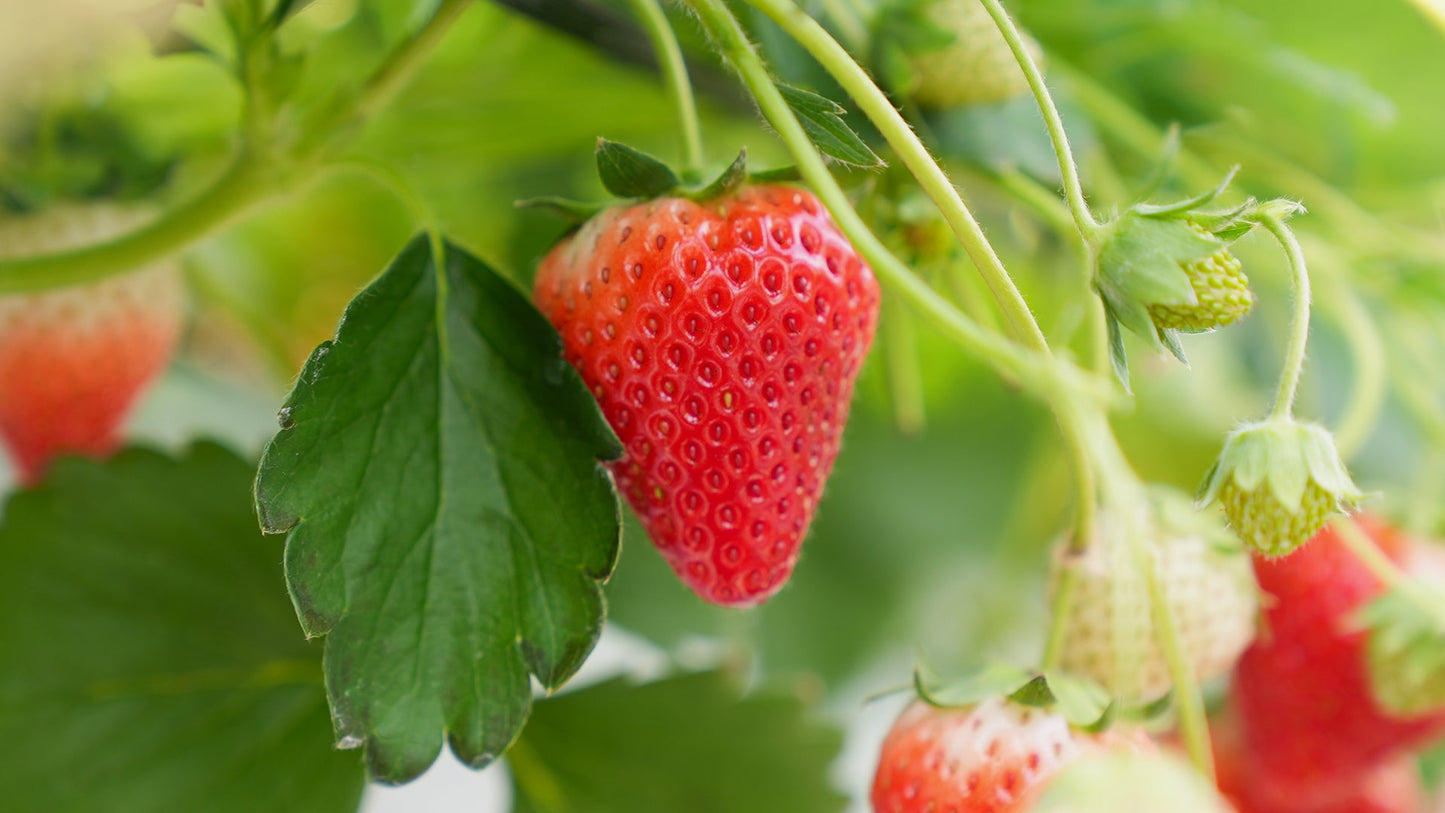
No one loves strawberries quite like the Japanese. Originally brought to Japan by the Dutch in the 1800s, modern-day Japanese people love adding strawberries to everything from Christmas cakes to traditional Japanese sweets like daifuku. This love of this incredibly special fruit has created a unique culture around strawberries rarely experienced by those outside Japan.
Major differences between American and Japanese strawberries are in everything from the taste and appearance, to its cultivation method. Each of these aspects of Japanese strawberries is carefully monitored to ensure only the cream of the crop makes it to market. These differences are what make Japanese luxury strawberries worth every penny1.
What do Japanese Strawberries taste like?
You’ve likely eaten plenty of strawberries in your lifetime. But no matter how many you’ve had, they’re nothing like what you get when you take your first bite of a Japanese luxury strawberry.
In America, it’s hard to name specific varieties of strawberries for the average person. Compare this to fruits like apples where different varieties (Red Delicious, Granny Smith, Fuji, etc.) come to mind easily. In Japan, the unique varieties of luxury strawberries are often obvious and clearly named like Beni-hoppe, Tochiotome, Amaou, Bijin-hime to mention a few.
Within the country, there are over 300 varieties of strawberries being cultivated. One of the features of Japanese strawberries that has made them so popular around the world is their array of flavors. Depending on the strawberry variety, you could be getting a very different flavor profile.

American strawberries and Japanese strawberries taste quite different. While American strawberries are mostly tart, Japanese strawberries have a rich sweetness with mild acidity. Many people who have tasted Japanese strawberries say they’re juicier and more tender than the strawberries commonly eaten in the U.S.
The look: Japanese pink and white strawberries
Can you imagine strawberries that aren’t red? In America, it’s hard to imagine a strawberry in any other color. Japanese luxury strawberries come in a range of colors from deep ruby red to practically white as snow. These visually striking options add an extra component to the taste experience.
White strawberries are a naturally occurring variety thought to be first discovered in South America. But these white strawberries were too sour and far from delicious by Japanese standards. So, farmers in Japan worked diligently to enhance the sweetness of these white gems.
Two exceptional examples are the Awayuki strawberry2 and Pearl White strawberry3. Awayuki (meaning “light snow”) is a gentle cherry-blossom pink that makes you think of a classy Provence rosé. Imagine a light powdering of white mixed with the ruby red you associate with strawberries.

Awayuki strawberry was first discovered in 2013 from a mutation of “Sagahonoka” a strawberry from Saga Prefecture. The pink hue comes from its unique feature of producing less anthocyanins, the pigment responsible for creating a red hue when exposed to sunlight. Its gentle acidity and lavish sugar content makes it a fan-favorite in Japan.
Pearl White strawberry is, as the name suggests, a stainless white that evokes the image of a pearl. You’ll immediately notice the robust fruity aroma which takes the indulgence to the next level. When white strawberries were first discovered in the wilderness, they were too sour and far from enjoyable. Koki Maeda wanted to create a sweeter white strawberry, which led to the development of Pearl White4.

The cultivation method of Japanese Strawberries
While most strawberries in the U.S. are grown in the open field, Japanese strawberries are mainly grown in controlled greenhouses. Greenhouses have been designed to protect the strawberries from adverse weather conditions, pests and diseases. It also allows the farmers to carefully control temperature, humidity and sunlight to ensure the same delicious taste, shape and size for every single strawberry.

Strawberries are one of the most challenging fruits to cultivate because of their sensitivity to sunlight, high temperatures, dryness and pests to name a few. That’s why farmers constantly observe their crops and adjust their growing environment. These efforts are mostly done by human power.
Harvest timing is key to the deliciousness of Japanese strawberries. The longer the strawberries are on their runners (or stems) before harvesting, the sweeter they become because it accumulates more glucose from photosynthesis. Japanese strawberries are harvested at the peak of ripeness, meaning the peak of sweetness. In contrast, many strawberries in the U.S. are harvested before they’re fully ripe to withstand transportation. This means that the strawberries are shipped out before reaching their full sweetness potential.
So how come Japanese strawberries maintain their beautiful aesthetics and get delivered in the perfect condition? That’s because the farmers employ strict inspecting and packaging standards. Japanese farmers are meticulous when it comes to inspection. They won’t allow even the smallest needle hole to slip away as it can cause molding during transportation.

Every single strawberry is inspected with a keen eye, weighed to make sure it’s the right size and carefully packaged with customized packaging that prevents damages from transportation.
The difference between Japanese and American strawberries
To summarize, Japanese strawberries, grown in greenhouses, benefit from controlled environments, ensuring superior sweetness, juiciness, and unique colors like cherry-blossom pink. They are harvested at peak ripeness for optimal flavor. Whereas, American strawberries, typically grown in fields, are picked earlier for transport durability, often affecting taste. The meticulous cultivation and quality of Japanese strawberries contribute to their luxury status.
The Japanese strawberries ordered through Ikigai Fruits are grown with an unmatched level of detail and care. Check out our strawberries and experience this rare and precious fruit.
